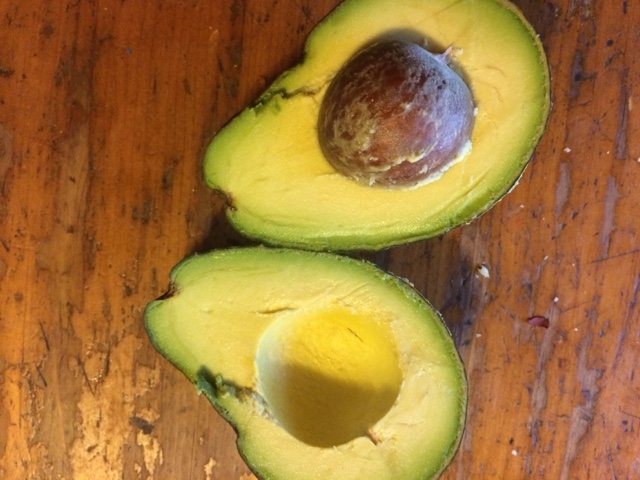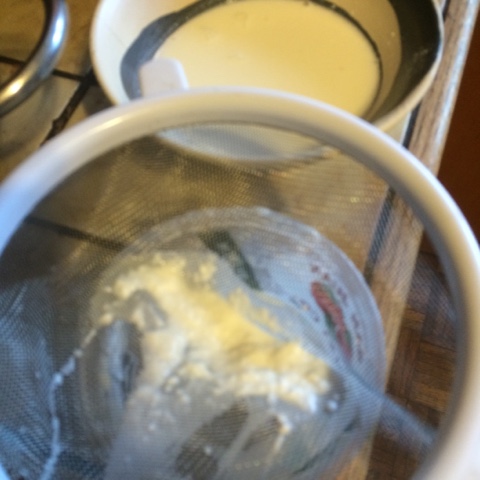| grey spring |
I suppose, to be honest, what it really cuts into is my free time. Reading, cruising the internet, blogging, leisurely baths.... all those things are luxuries, of course, to a mom with a job and a farm. Before I worked outside the home, I used to do my housework at a nice slow pace. I might sit down with a cookbook, read for awhile until something piqued my interest, then go shopping for ingredients and spend the afternoon cooking. Now I boil up some noodles or fry a bunch of eggs at short-order speed, trying to fit dinner in between after-school activities, homework help, evening chores, and bedtime.
Homero has been picking top an awful lot of slack, lately. He does the morning chores almost every day, including milking. We are giving an awful lot of milk to Haku simply because I don't have time to make cheese. He's getting fat, though it doesn't seem to slow him down any, more's the pity. We finally had to strip the playroom of carpet entirely, because he had pulled it all up and ripped it to shreds. It's down to the bare plywood now, and I am just waiting to see how he manages to destroy that.
I don't think I'm going to get a garden in at all this year. We did plant a couple of hazelnut trees and I'm going to plant a couple more apple trees, but as far as a vegetable garden, I just don't think it's going to happen. Partly this is because of another giant time-suck - the Gleaner's Pantry. I adore the Gleaner's, it brings in hundreds of dollars worth of organic produce a month, but in exchange it demands about 20 hours of work a month, broken up into three or four several-hour-long chunks. That isn't counting all the work I do at home to prepare for such an influx - cleaning out the fridge before I go - nor what I do to preserve it afterwards, whether it be canning, freezing, juicing, our whatnot. And I know I just said how much work Gleaner's is, but truth be told its a hell of a lot less work than actually gardening. When I have unlimited, varied, organic produce spilling out of my refrigerator, it's difficult to work up the motivation to pick up a shovel.
Another reason not to put in a garden this year is that we will be spending a big part of the summer in Oaxaca. This will be our first trip to Mexico since we came back from our year with Abuelita, in 2013. (New to Mexican Life) The children are super excited to see their cousins again. There's not much point planting vegetables in April and May when you'll be out of town for all of July.
It's still far too wet to start planting, in any case. This has been the wettest year to date in Washington state history (As rain falls, so does Seattle's record for wettest wet season ...) and that's really saying something. We have used some twenty-five yards of mulch and chips this year, just to keep the poor animal's heads above the mud. The grass is growing pretty well, due to warm temperatures, but the ground is still too saturated to let the horses out on pasture. The pasture got pretty torn up last fall when our pig learned to get out of his pen, and I want to give it a good long rest. I've reseeded the areas the pig plowed up, and I need to give the seed time to germinate and get a good head start before I loose the ravenous beasts. That means we are still feeding hay, though less of it, as the goats have some browse and the ponies can be staked out in the orchard on days when it isn't raining.
Poor Rosie pony's horrible eye problem is back, and it's worse than ever. Her eye is so swollen and ugly that I'm ashamed to post a picture of it. I've been washing it with warm salt water and putting antibiotic ointment in it for the past several days, but I don't see much difference. She is clearly suffering, and besides her eye, she is looking thin and rundown. Maybe she needs a different wormer than the one I've been using - pretty haphazardly, I must admit. But as the single most superfluous animal on the farm, I don't get much of a vet budget for Rosie. She is getting on in years, and soon I will have to start thinking about when it might be time to send her on to the great green pasture in the sky. Not yet, but soon.
We had a chicken attrition situation over the winter, as is often the case. In fact, the chickens and turkeys were disappearing at such a clip late last fall that I invited a couple of local boys to lay out in the field with .22 rifles and wait for the coyotes to show up. The coyotes never did show up, but when the boys were scoping out the perimeter, they said we had both canine and feline tracks in the mud along the fence line and suggested we probably had a bobcat as well as coyotes preying on our poultry.
The chickens are locked in the coop, now, though I hate to do that to them. This time of year it is always wet in the coop, and the chickens really ought to be out scratching for spring bugs and eating the worms who are lying about all over the place, trying not to drown. There are five hens left, but only three of them are laying. Two of the three eggs that I gather each day are distinctive - the tiny egg is laid by the one banty hen; the white egg is laid by the lone leghorn - but the third egg could be anybody's, so I don't know which hens are the slackers.
Five chicks are in a big wooden box in the shed, under a heat lamp. I brought them home last week. They are leghorns. I had never raised that breed before (most commercial layers are leghorns) because I thought I wanted a dual purpose hen, one that was heavy enough to eat when she ran out of eggs. But time and experience taught me that actually, I am not interested in a free-range old layer hen as a culinary item. It's nasty. And then I acquired a couple of leghorns - I disremember how - and was very impressed with them. They are small, streamlined birds. They are bright white (we named them Pearl and Shell) and are good flyers, which keeps them a bit safer from predators. They will never go broody, which means they lay more eggs per year. They are regular egg machines - each hen laying one large white egg a day, with only the very occasional day off. I liked them so much I decided to buy all leghorn chicks this year. Five isn't very many, but assuming that at least three of them live to laying age (you never know with chicks) they will provide more than enough eggs for us.
Let's see, what else. Oh. Out of Flopsy's four babies (The (Finally) Four) we only have one left. On the day they kidded, I gave two bucklings away to a neighbor farmer lady who enjoys bottle babies. I do not enjoy bottle babies. We kept two babies on Flopsy - a beautiful buckling and a fabulously gorgeous spotted doeling. But there was soon a problem. Both babies only wanted to nurse off one side. Flops had mastitis and now has lopsided teats - one normal teat and one small one that gives about half as much milk. Oddly, they both wanted only the small one. I guess the big one was difficult to latch onto. Since the buckling was bigger and stronger, he drained all the milk from the small teat and the little girl didn't get any. I couldn't seem to teach her to use the big teat. After a few days, I went out in the morning and found the little girl flat out and cold. That happens if they don't get enough milk - they just lie down and give up the ghost.
I tried to revive her in a warm water bath and get her to take a bottle, but after a frustrating 24 hours I knew I wasn't up for it. I called the same neighbor and told her she could keep there baby girl if she wanted to try and save her. My saintly neighbor told me to bring her on over. She worked patiently over the next day and succeeded in getting her to take a bottle. Then - this is so cute, I wish I had a picture - my neighbor's pigmy doe kidded with a single kid. And our little baby Nubian girl went straight for the teat. She hadn't forgotten hoe to nurse. So now, this valiant pigmy Nigerian is nursing her own kid, plus a Nubian kid, who has to practically lay down in the dirt to get to the teat.
My neighbor insists on giving us the doeling back when she is old enough to be weaned. She says that keeping the two bucklings is payment enough for the trouble of caring for the doe. I told her not to make up her mind just yet. Assuming that little Ziggy (as her children named her) lives and thrives, she ought to be worth a fair amount of money. I said she should feel free to sell her, but so far, she continues to say she will give her back to us. If so, then we will have two new does from this season, Ziggy and Christmas. That will make up for the two I plan on retiring - Iris and Flopsy.
The farm goes on. 2016 is a new year, our eighth here on this windy wet hill, I think. I'm not quite so "new to farm life" as once I was. We are settling into a good groove. I know now, more or less, how many animals the land will support, and what sort of animals are most useful and profitable to us. I continue to learn about husbandry, both of the land and the animals - and, I suppose, of my children and of my marriage and of my very own soul. I really do love to feel the slow deepening of knowledge and experience that comes from knowing a single place - or a single person - intimately, and living with a single place - or a single person - intimately, in all of its seasons, in all of its moods, in all of its slow splendor. This land, this place, this time, these people, these animals, this carefully tended ecosystem - here we all are, surviving. Hopefully thriving. Caring for each other as best we can.






